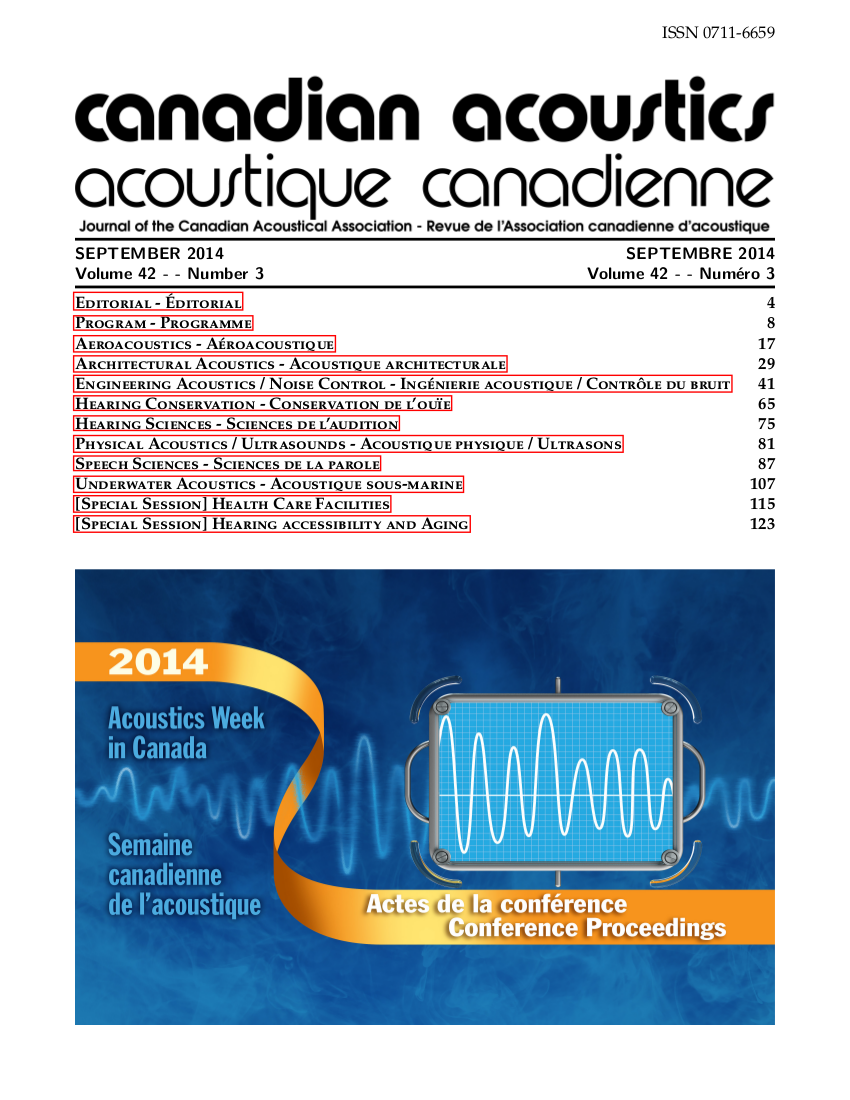IMPACT OF AUDITORY ATTENTION ON THE EFFERENT AUDITORY SYSTEM IN THE ABSENCE OF REAL AUDITORY TARGETS.
Abstract
Previous studies have compared visual and auditory attention to no task conditions and have demonstrated an attention driven modulation of the efferent auditory system (De Boer & Thornton, 2007; Maison et al., 2001). However, it is unclear whether these effects are modality-specific or a result of a generalized attentional processes. In the present study, 16 young adults observed facial speech gestures related to productions of vowels /a/ and /u/ in the presence of contralateral noise under two instructions: (a) visually count the number of /a/ productions and ignore contralateral noise (visual attention) and (b) to listen carefully and detect target sound /a/ embedded in contralateral noise (sham condition; auditory attention). These "œsham" trials did not have any acoustic targets and investigated the effect of auditory attention even when there was no real target. The influence of visual and auditory attention on the efferent auditory system were indirectly assessed by examining the effects of Contralateral Suppression on Transient-evoked otoacoustic emissions (CS-TEOAE paradigm; Collet et al., 1990). The Mean (S.D.) change from baseline for visual attention and auditory attention were 2.19 (1.98) and 1.88 (1.82), respectively. Cohen's d for the mean difference between the two conditions yielded a moderate positive effect size = 0.52. 12 out of 16 (75%; exact binomial test significant at one tailed p = 0.03) participants demonstrated a greater suppression of TEOAEs (mean difference = 0.31 dB SPL) in the sham/auditory attention condition relative to the visual attention condition. These effects are similar to those reported in the literature, wherein attention to stimuli in the contralateral ear increased OAE suppression (Harkrider & Bowers, 2009). Our results show that these effects are obtainable even in the absence of real auditory targets (i.e. without stimulus confound). Overall, these findings suggest a modality-specific attentional modulation of the efferent auditory system.Additional Files
Published
How to Cite
Issue
Section
License
Author Licensing Addendum
This Licensing Addendum ("Addendum") is entered into between the undersigned Author(s) and Canadian Acoustics journal published by the Canadian Acoustical Association (hereinafter referred to as the "Publisher"). The Author(s) and the Publisher agree as follows:
-
Retained Rights: The Author(s) retain(s) the following rights:
- The right to reproduce, distribute, and publicly display the Work on the Author's personal website or the website of the Author's institution.
- The right to use the Work in the Author's teaching activities and presentations.
- The right to include the Work in a compilation for the Author's personal use, not for sale.
-
Grant of License: The Author(s) grant(s) to the Publisher a worldwide exclusive license to publish, reproduce, distribute, and display the Work in Canadian Acoustics and any other formats and media deemed appropriate by the Publisher.
-
Attribution: The Publisher agrees to include proper attribution to the Author(s) in all publications and reproductions of the Work.
-
No Conflict: This Addendum is intended to be in harmony with, and not in conflict with, the terms and conditions of the original agreement entered into between the Author(s) and the Publisher.
-
Copyright Clause: Copyright on articles is held by the Author(s). The corresponding Author has the right to grant on behalf of all Authors and does grant on behalf of all Authors, a worldwide exclusive license to the Publisher and its licensees in perpetuity, in all forms, formats, and media (whether known now or created in the future), including but not limited to the rights to publish, reproduce, distribute, display, store, translate, create adaptations, reprints, include within collections, and create summaries, extracts, and/or abstracts of the Contribution.


